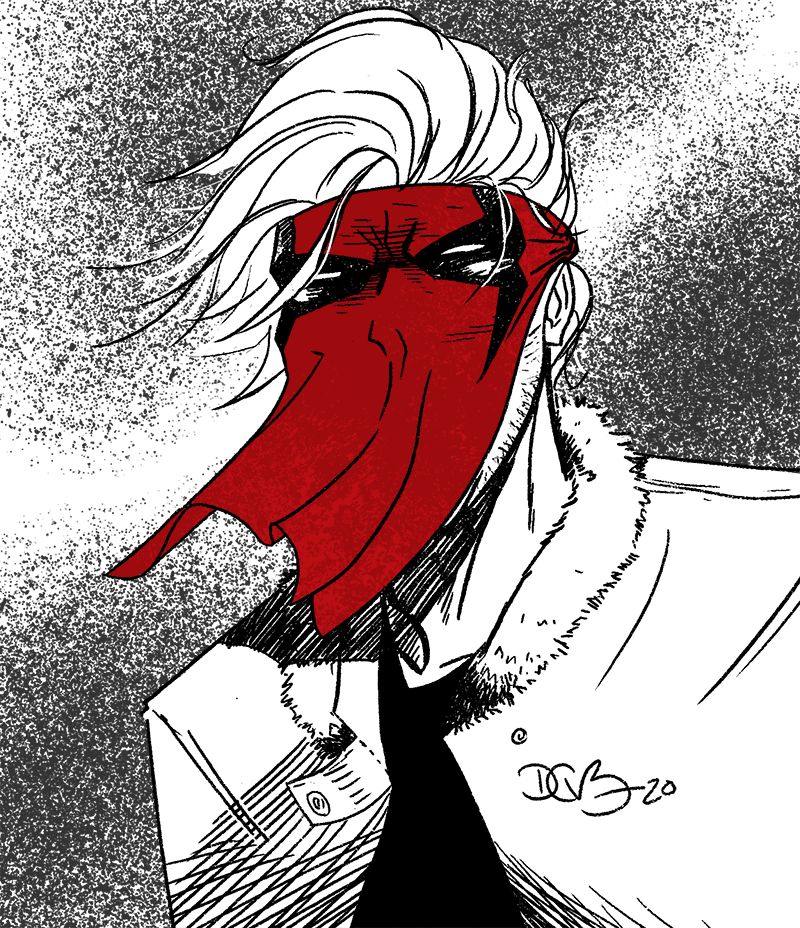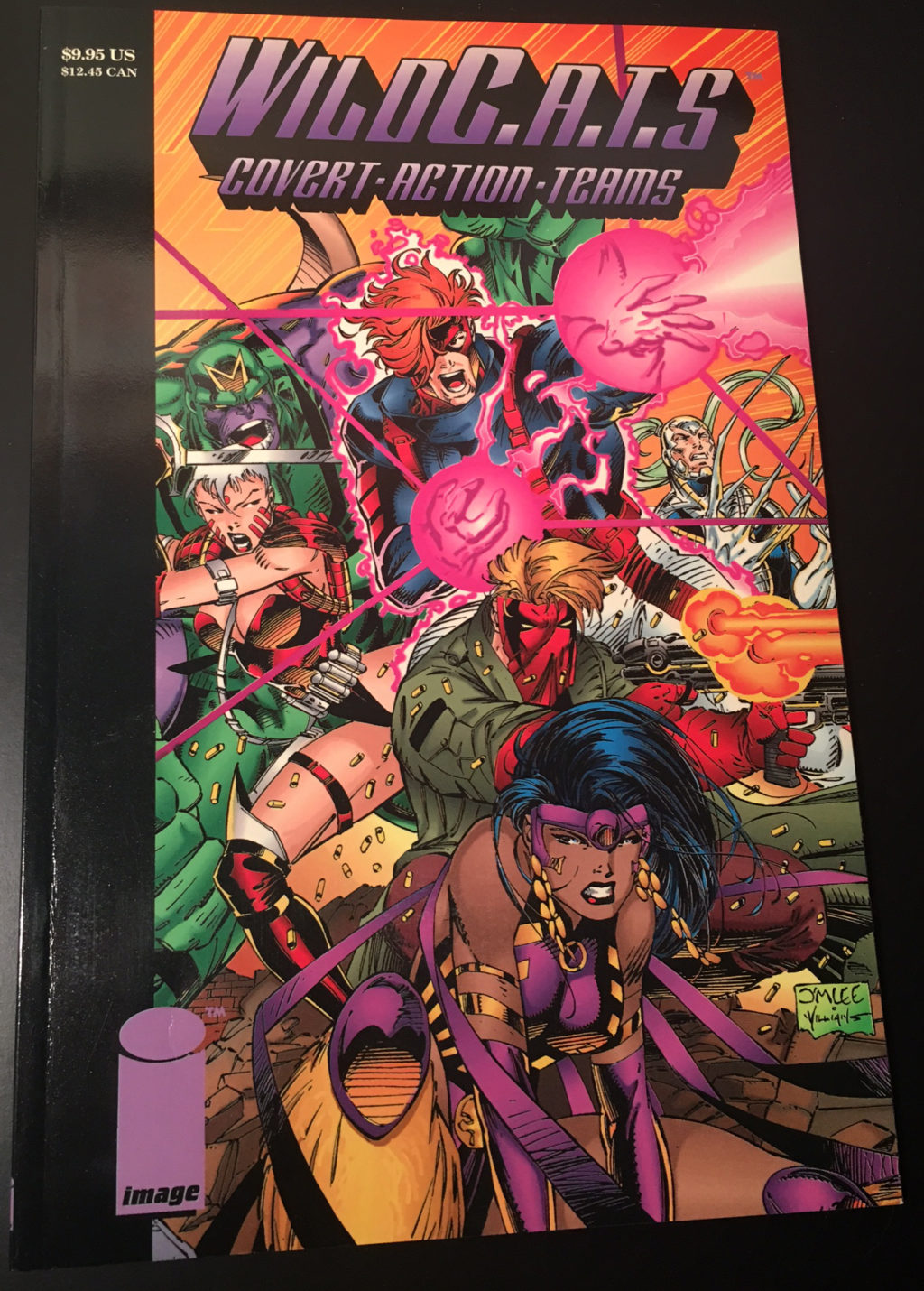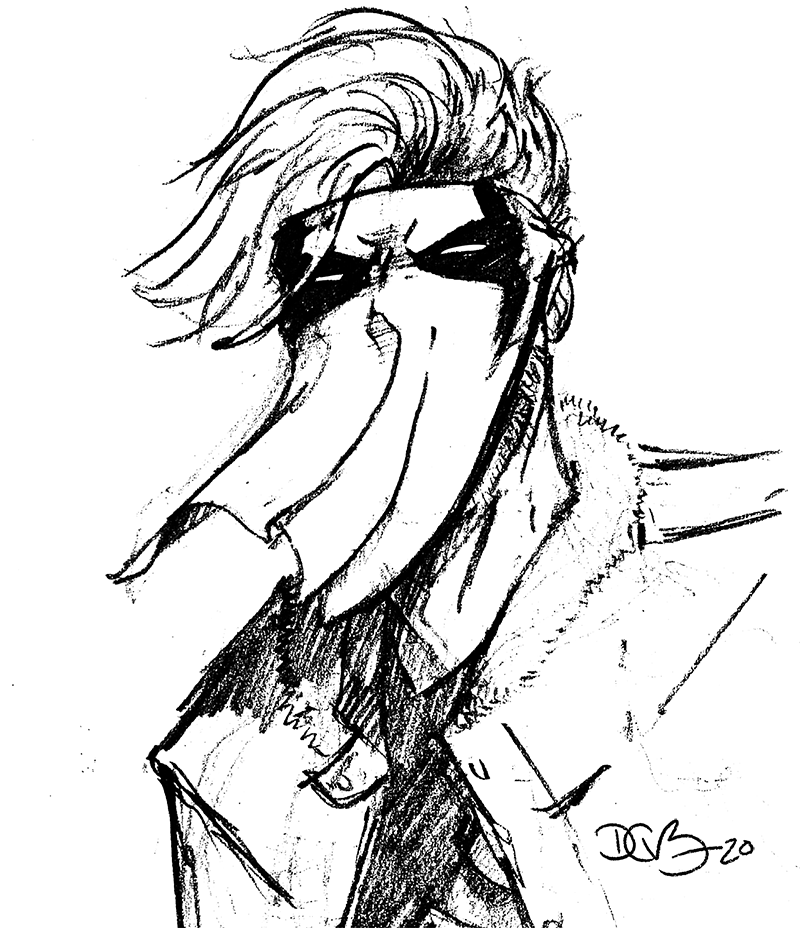Sketch Fridays #69 – Grifter

I was simultaneously lucky and unlucky to be a young comic book reader in the early 1990s. It was the era of ravenous gluttony on the part of the industry as patient and opportunistic collectors inflated sales and encouraged cheap attempts at getting more money from fans. This lead to comics being released with variant covers (a practice that persists through to today), gimmick covers (foil embossed, embedded holograms, reflective, cutouts, etc.), and crossover events––all things done to boost sales. The promise of collectible comics drove the entire industry right off the cliff as it saturated the market with literally too many comics.
On the other side, those years were great because the superstar artists like Jim Lee, Marc Silvestri, Todd McFarlane, Rob Liefeld, and others, were drawing striking, dynamic, and powerful comics, pushing the limits of the medium at the time and doing things no one had seen before.

Those artists specifically––along with Jim Valentino, Erik Larsen, and Whilce Portacio––were all the top tier artists at Marvel Comics, all drawing books from the two most popular franchises in comics at the time: X-Men (Lee, Liefeld, Silvestri, Portacio) and Spider-Man (McFarlane, Larsen). With their rising status, however, they still found their rights stifled under the traditional work-for-hire contracts both Marvel and DC operated under––these artists were creating so many new characters and stories but never owned any of it. The best they could get was a promise to put their names as the creators on future books (this has worked swimmingly for Rob Liefeld, and his creations Deadpool, Cable, and Domino paying in dividends in terms of visibility and merchandise).
Frustrated, these seven creators did something no one had really done before––they left Marvel. They then walked over to DC and said, simply, “We’re leaving Marvel and we’re not coming to work for you, either.”
That was the creation of Image Comics, which has become the third tier of the comics publishing industry, though the Image Comics of today is a very different thing than the Image Comics of 1992. That is, except for their philosophy: Image Comics owns nothing except the Image Comics logo/emblem. The creators own all of their comics and get all the revenue (except a small payback to Image who fronts the cost for printing). That was the premise the company was founded upon and it persists to this day.
Each of the big creators started their own comics, and my teenage artistic hero, Jim Le, created WildC.A.T.s, the closest thing you can get to the X-Men without being the X-Men.

Under Jim Lee’s imprint called WildStorm, what started with WildC.A.T.s grew into its own universe of titles and characters and I was on board with most of them for awhile.
Then the glut got to me and I bounced off of monthly comics by the late ’90s. It wasn’t until years later when I learned that Jim Lee sold his WildStorm imprint to DC Comics, causing him to leave the Image pantheon. It wasn’t until I read Joseph Hedges’ wonderful book––Wild Times: An Oral History of WildStorm Studios––that I learned the details: WildStorm was barely staying afloat, especially as the collector’s market collapsed the industry. But it maintained a certain level of prestige with its art and print quality and, apparently, most notably with its digital coloring. DC wanted WildStorm’s coloring and bought the studio and all of its intellectual property to get it.
When I first learned the studio was sold to DC it actually affected me. When I learned the details I surely felt empathy and agree it was likely the best move, but I didn’t shake that doing that betrayed spirit that created those characters, which is something that motivates me today: creative autonomy. These creators were heroes to us young readers who were now creating heroes free from the shackles of Big Editing or Corporate Mandate (the two most evil villains) only––in WildStorm’s case––to go right back into that cave.
Though DC owns the characters and Jim Lee is co-publisher of DC Comics, the WildC.A.T.s are nowhere to be found outside of a few earnest attempts over the last decade. Once the paragons of independent comics they are now third-tier characters rotting in a creative basement. It’s a sad end, and even though I don’t really remember a single storyline from the entire run (except the time when they crossed over with the X-Men), I still feel a small, twinging pang when I see a WildC.A.T.s trade collection or back issue with the DC Comics emblem instead of the Image “I”.
They still remain free to me.

Discussion ¬